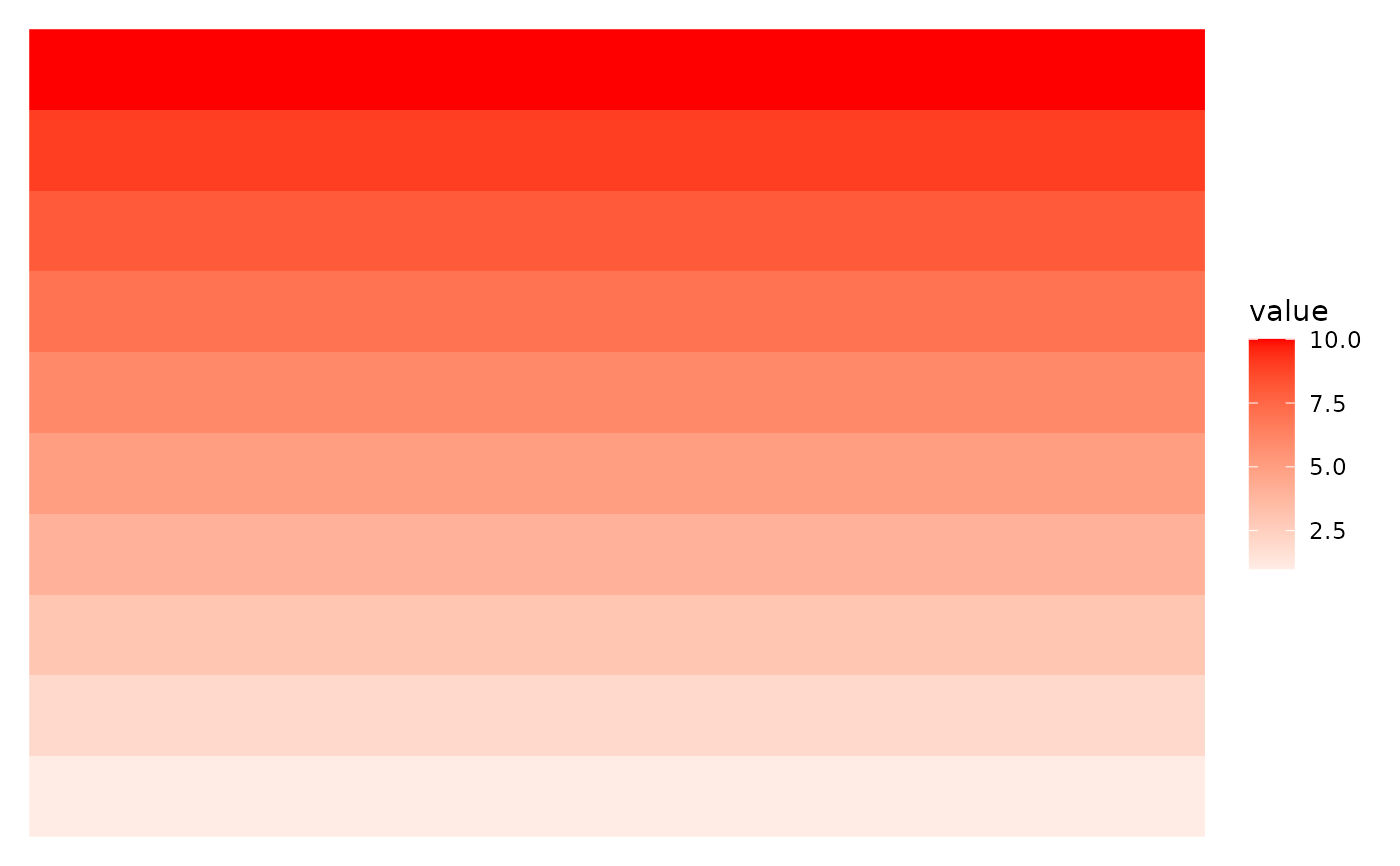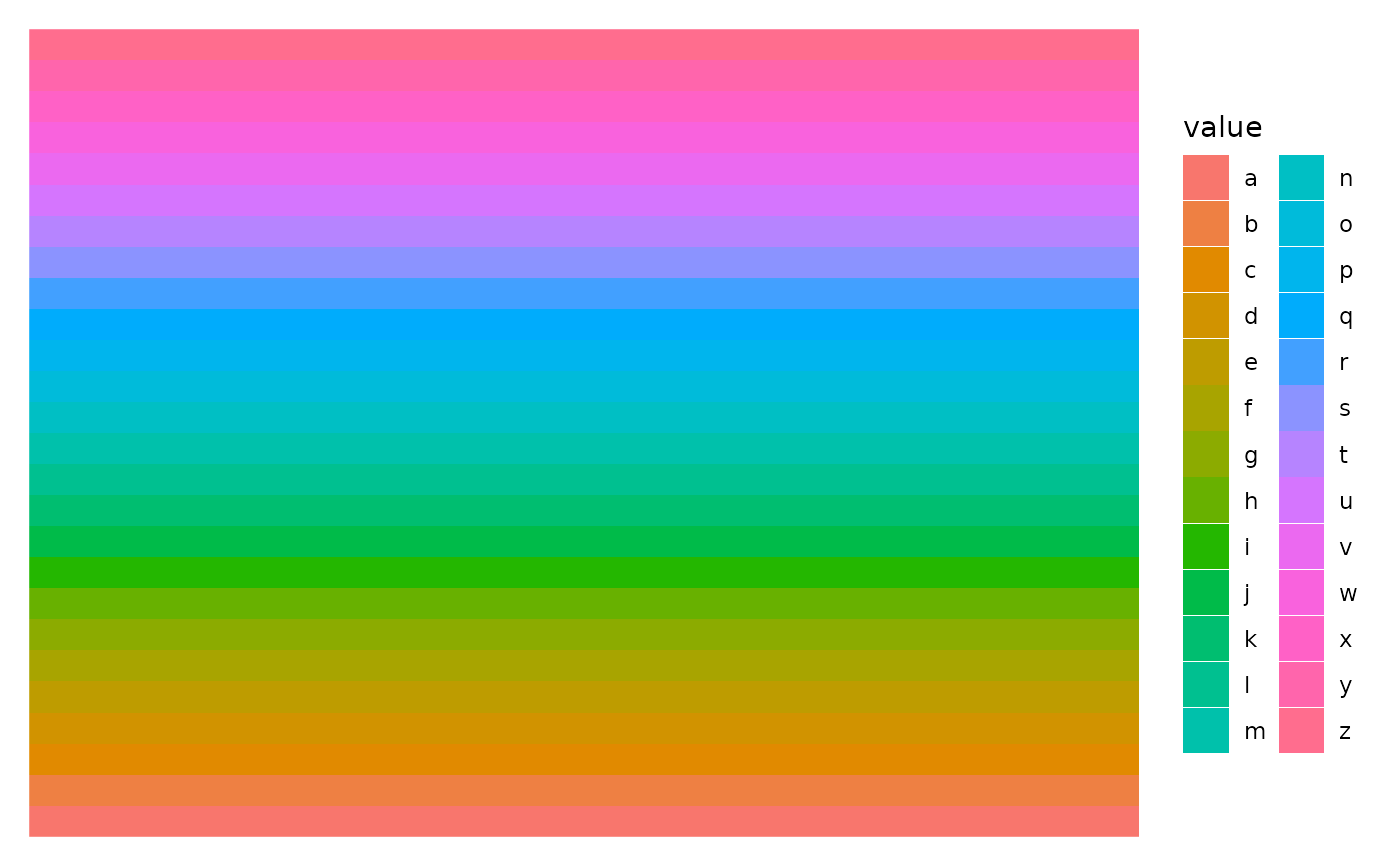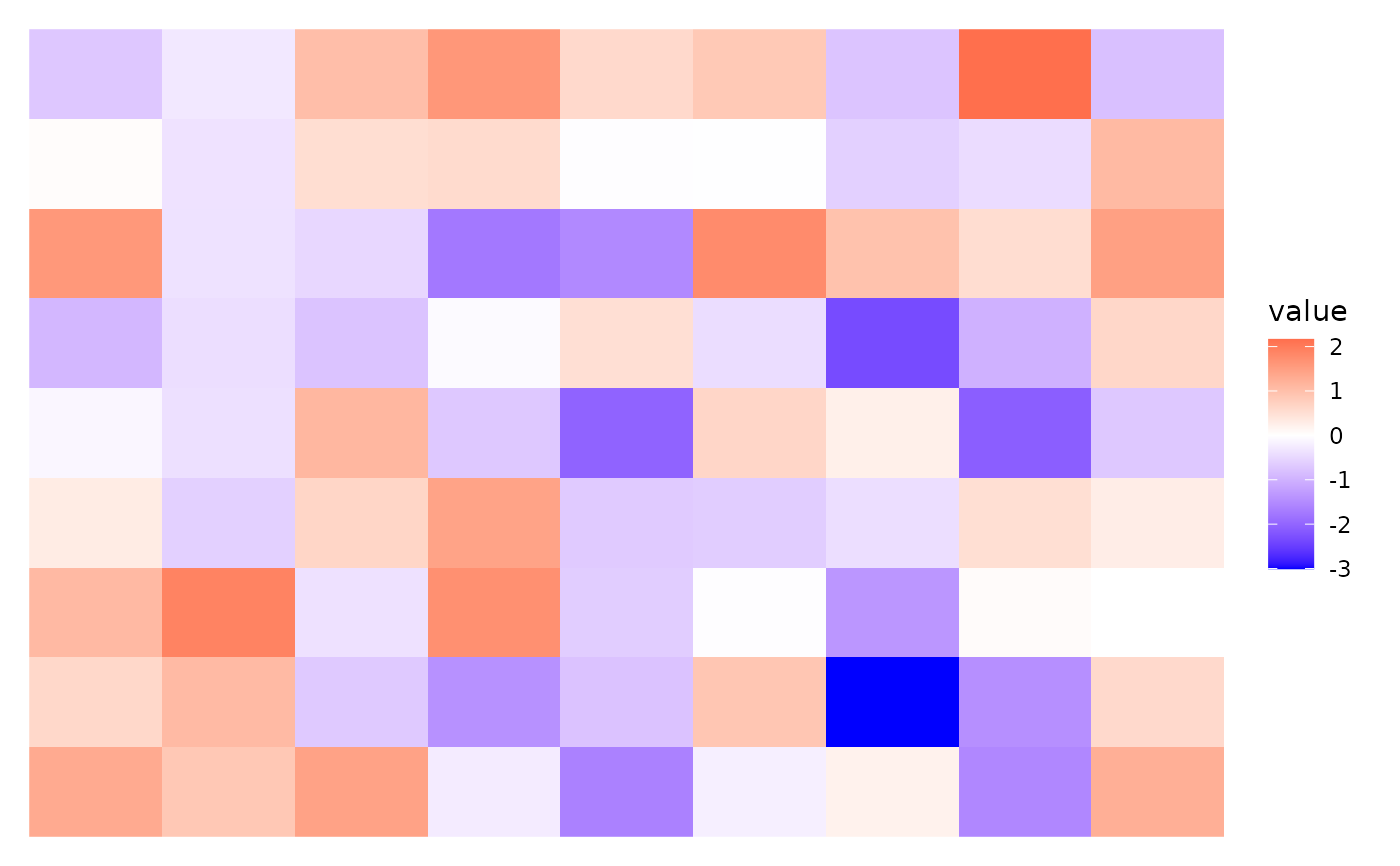heatmap_layout is a specialized version of quad_discrete(), which
simplifies the creation of heatmap plots by integrating essential elements
for a standard heatmap layout, ensuring that the appropriate data mapping and
visualization layers are automatically applied. ggheatmap is an alias for
heatmap_layout.
Usage
heatmap_layout(
data = NULL,
mapping = aes(),
...,
width = NA,
height = NA,
filling = waiver(),
theme = NULL,
active = NULL
)Arguments
- data
Default dataset to use for the layout. If not specified, it must be supplied in each plot added to the layout. By default, it will try to inherit from parent layout.
fortify_matrix()will be used to convert data to a matrix.- mapping
Default list of aesthetic mappings to use for main plot in the layout. If not specified, must be supplied in each layer added to the main plot.
- ...
Additional arguments passed to
fortify_matrix().- width, height
The relative width/height of the main plot, can be a
unitobject.- filling
A single string of
"raster"or"tile"to indicate the filling style. By default,waiver()is used, which means that if the input matrix has more than 20,000 cells (nrow * ncol > 20000),geom_raster()will be used for performance efficiency; for smaller matrices,geom_tile()will be used. To customize the filling style, set this toNULL.For backward compatibility, a single boolean value is acceptable:
TRUEmeanswaiver(), andFALSEmeansNULL.By default, the classic heatmap color scheme
scale_fill_gradient2(low = "blue", high = "red")is utilized for continuous values.You can use the options
"ggalign.heatmap_continuous_fill"or"ggalign.heatmap_discrete_fill"to modify the default heatmap body filling color scale. Seescale_fill_continuous()orscale_fill_discrete()for details on option settings.- theme
A
theme()object used to customize various elements of the layout, includingguides,title,subtitle,caption,margins,panel.border, andbackground. By default, the theme will inherit from the parentlayout. It also controls the panel spacing for all plots in the layout.- active
A
active()object that defines the context settings when added to a layout.
ggplot2 specification
The data input will be converted to a matrix using fortify_matrix(), and
the data in the underlying main plot will contain the following columns:
.panel_xand.panel_y: the column and row panel groups..xand.y: an integer index ofxandycoordinates.discrete_xand.discrete_y: a factor of the data labels (only applicable when.row_namesand.column_namesexists)..row_namesand.column_names: A character of the row and column names of the original matrix (only applicable when names exist)..row_indexand.column_index: the row and column index of the original matrix.value: the actual matrix value.



